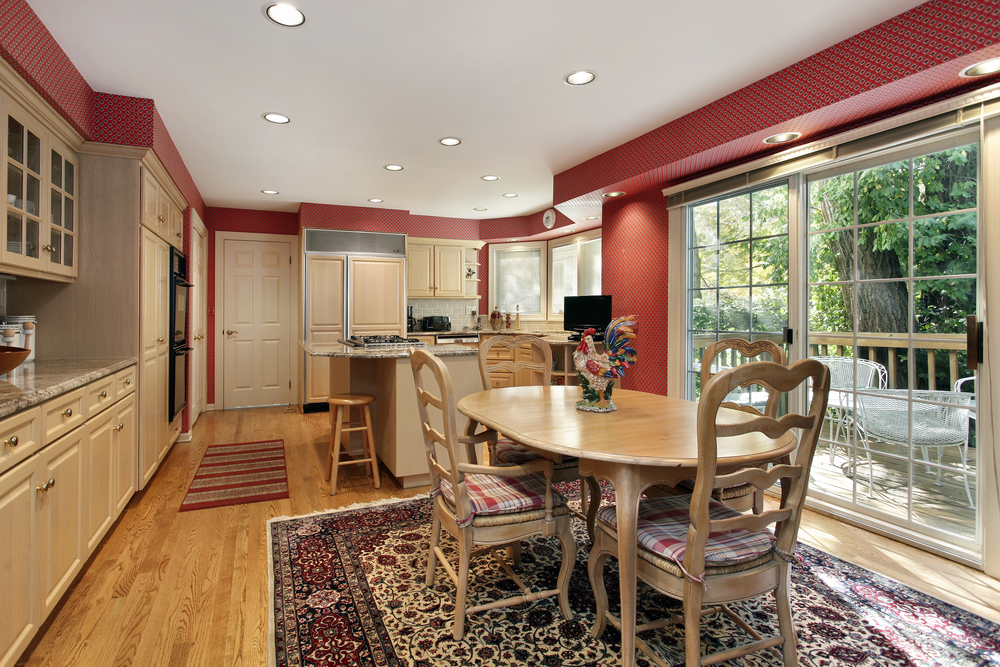
The kitchen can be an expansive area in the home that connects with other parts and hosts people living there to visitors and guests – safety is key along with eating, meeting, cooking, and other activities
If we conducted a survey and asked people to identify the most dangerous room in their home in terms of the potential for injuries, the majority would likely say the bathroom. True, it is quite a safety issue, and this would be a correct response. However, there is an equally good response – the kitchen. Depending on the size of the home, the number of people in it, the age of the home, and the relative size of the space of that room, the kitchen could present more safety challenges than the bathroom – certainly in the number and complexity of them.
In the bathroom, falls are the principal culprit, while in the kitchen, falls, burns, cuts, and other injuries are common.
Speaking of the bathroom, the CDC reports that nearly one-quarter of a million people seek medical attention at the emergency room (transported by an ambulance or getting there on their own) due to an injury in the bathroom. There aren’t any comparable statistics for kitchen injuries, and many of them aren’t as severe, but the kitchen poses multiple injury risks.
To be clear, the bathroom has many things working against us while we are in it that could result in injury, and a serious one at that. First, all of the surfaces are hard – the tub or shower (curbs, walls, and floor), faucets and showerheads, toilets, sinks, cabinetry when present, floors, and accessories (towels bars, for instance). The flooring is quite hard but often wet as well, making it doubly tricky.
When we visit the bathroom, we might be getting up to begin our day (perhaps still partially asleep) or might be getting ready for bed (also partially asleep). We may be in various stages of undress depending on what we are doing at the time in the bathroom. These situations compound the safety issues present and make our relative safety more challenging.
We often fail to give the bathroom much consideration as the safety trap that it is because we are in a hurry to accomplish what we have visited the bathroom for and go about our day. We are focused more on our activities than how well we are doing them safely or using the space effectively. Thus, bathroom injuries sneak up on us. We know they can happen but never really count on that possibility. Unfortunately, other people may suffer them, but we don’t count on them for ourselves.
We can’t be skittish about using the bathroom or afraid that a major calamity will befall us at any moment, but we need to be reasonably cautious rather than oblivious to the obvious apparent risks that are present. Using reasonable care and being alert to what is going on around us are good guidelines. It’s when we let down our guard and become a little careless that accidents can happen.
So, we can agree that bathrooms are tricky and potentially dangerous with their hard and slippery surfaces, as well as often being relatively tight on floor space. But, what about our kitchens?
When we consider the number of activities that can occur int he kitchen – many at essential;y the same time – and the number of people that can be engaged in the space together, it’s easier to see how the kitchen can present safety issues.
In the bath, we generally expect to be there alone or with no more than one other person – a close family member or caregiver. In the kitchen, we can be there with people we are seeing for the first time – people there for an appointment or a function, neighbors who are new to us, friends of people we invited, or friends of other family members.
We have challenges of being in the space with other individuals and not colliding with them or causing something they are carrying to spill onto us. We might be using sharp instruments – scissors or knives, for instance – when someone near us causes us to lose focus or to concentrate on not impacting or injuring them and accidentally hurting ourselves.
Just having additional people in our kitchen space, regardless of how roomy or tight that space might be, can present issues in terms of general comfort and mobility. Many of these people might be relative strangers to us so this complicates the use of the space.
The kitchen is the most public area of the home and hosts more activities – and more varied ones – that any other room in the home., We have ourselves, other family members (living with us and returning), and people who don’t live with us who could be in the space at any given time. We have to be aware of our own safety but also the needs and requirements of the others present.
While the kitchen provides a lot of good sensory experiences and the opportunity to share good times with others, it can present several safety challenges at the same time.
